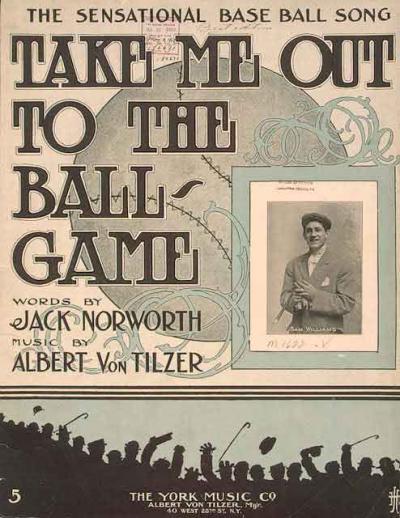The Story Behind the Singing Suffragist at the Old Ball Game

It’s become a staple of the major league ballpark experience, sung during the seventh-inning stretch, when fans rise from their hard plastic seats to let blood circulate and aid in the digestion of Nathan’s finest, cheese fries on the side. It’s rousing, it’s joyful, its singsong verses suitable for lusty belting en masse and en plein air. But how exactly did “Take Me Out to the Ball Game” come to be such a tradition, and is there anything behind the surface meaning?
George Boziwick knows all about it. Until recently the head of the music division of the New York Public Library for the Performing Arts, in 2008 he curated an exhibition on the 100th anniversary of the song and has lectured on it at the National Baseball Hall of Fame in Cooperstown, N.Y. Now, on Saturday at 4 p.m., he’ll be at the Bridgehampton Museum’s archives building to show slides, play recordings, and generally elucidate.
“The first and second verses we never hear,” he said the other day from his home in the Park Slope section of Brooklyn. “Nowadays we sing only the chorus. But it starts with a woman’s desire to be at the game, not a show.”
“In 1908 it was not a common sight to see a woman at a ballpark. Not only that, she leads the crowd in cheering.” He likened the act to women “protesting for their rights, as suffragists.” And we’re right at the 100th anniversary of the vote for women being signed into law in New York State. “She was an independent woman, so the song explores the idea of a new woman, rooting in public in a boisterous way.”
Jack Norworth’s lyrics, second verse:
Katie Casey saw all the games,
knew the players by their first names;
told the umpire he was wrong,
all along good and strong.
When the score was just two to two,
Katie Casey knew what to do,
just to cheer up the boys she knew,
she made the gang sing this song:
You know the rest.
“So by doing this,” Mr. Boziwick said, “the fictional Katie Casey sets the song on its future course of greatness, because someday a woman will in reality be able to lead the crowd in singing ‘Take Me Out to the Ball Game’ at the ballpark, just as Katie Casey does in the song and as we do today.”
“Two other similar songs soon followed” — he’ll play them and other baseball songs of the period on Saturday — “but this is the only one to state that a woman could and should be at a game, rooting in the stands like the men. It’s not patronizing.”
On a personal note, a trip to Bridgehampton for Mr. Boziwick is nothing new. On his mother’s side (Jean Kuch was her name), he’s a distant relation of Carl Yastrzemski, who’s a feature of the current exhibition where he’ll be speaking, and his father, whose mother’s maiden name was Norsic, lives in Sag Harbor.
But enough of the past, the man had to ring off. There was a Yankees playoff game to get ready for.
